Election 2015: Number of women in Parliament rises by a third
- Published
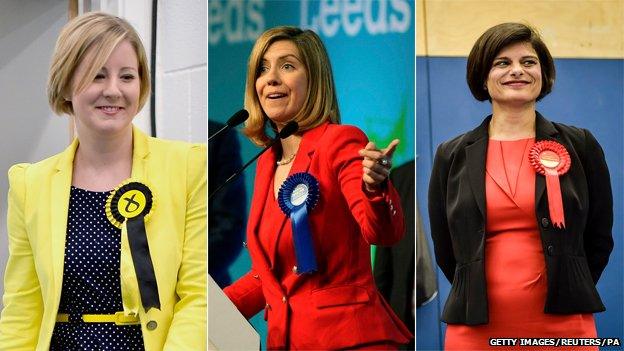
The SNP's Hannah Bardell, Conservative Andrea Jenkyns and Labour's Thangam Debbonaire were among the winners
In another dramatic change to the political landscape, the number of women in Parliament has risen by about a third.
With results in all 650 seats declared, about 29% of MPs are women - up from 23% before the election. This represents the largest increase since 1997.

The proportion of female Conservative and Labour MPs has increased, despite an overall fall in the number of Labour MPs.
But the biggest rise in female representation in the Commons came from the Scottish National Party, which now has 20 female MPs, up from just one.
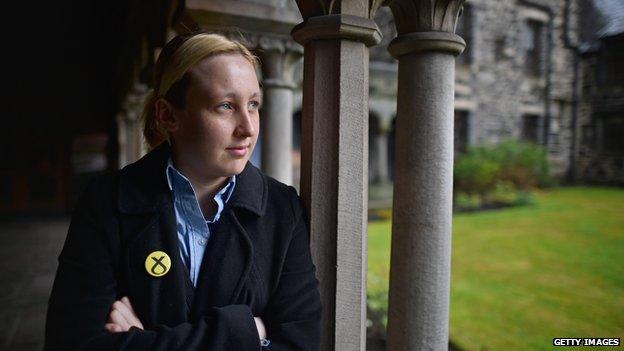
Twenty-year-old Mhairi Black is the youngest MP since 1667 and one of 20 SNP female MPs
All seven Lib Dem women who were MPs in the last Parliament have lost their jobs.
For many decades, female MPs made up less than 5% of the total.
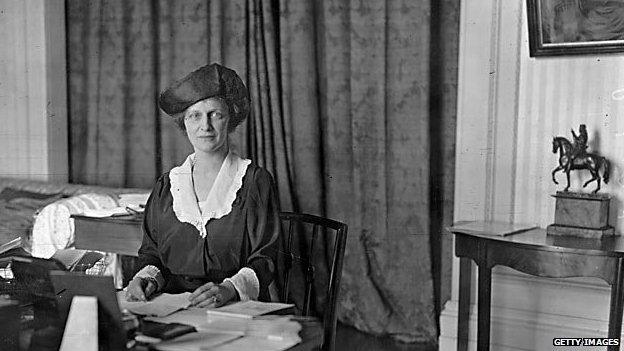
Nancy Astor became the first woman to take her seat in the Commons in 1919
This reached double digits for the first time under Margaret Thatcher in 1987, but shot up as a consequence of Labour's 1997 landslide, when Tony Blair's party increased its number of female MPs by 173%.

Before the election, the regions of the UK with the highest proportions of female MPs were north-east England, London and north-west England.
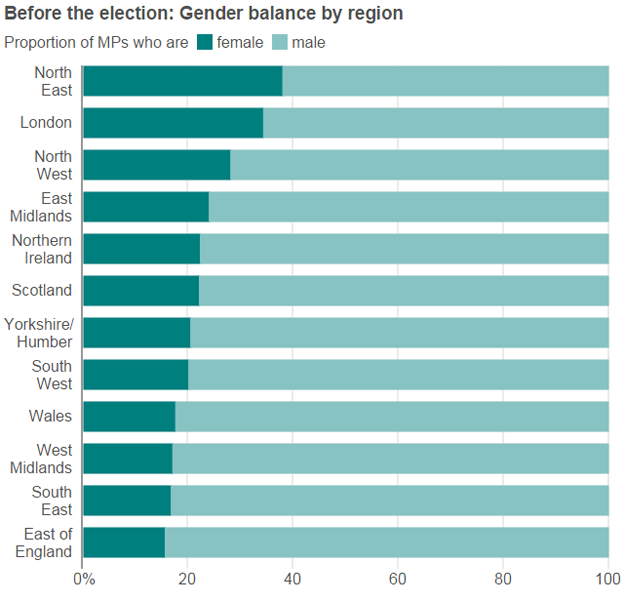
Although there is no change to the top three so far, the SNP's breakthrough manifests itself in a sharp rise in the proportion of female MPs in Scotland.
The east of England has also risen two places in the rankings - from bottom before the election.
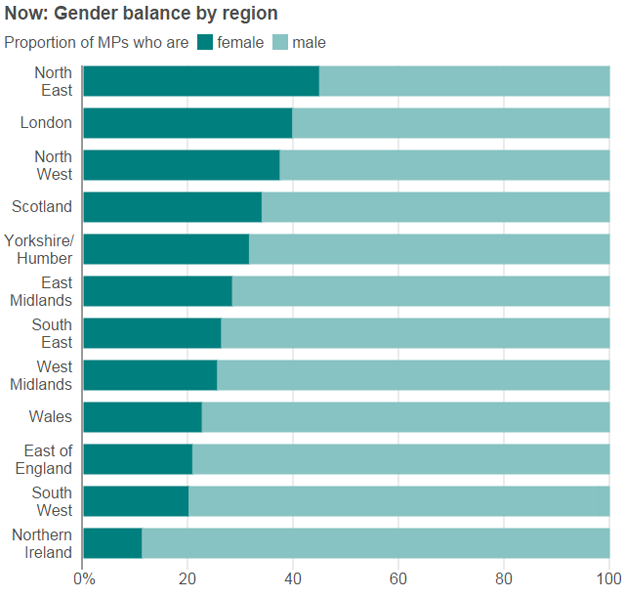
- Published5 May 2015

- Published8 May 2015
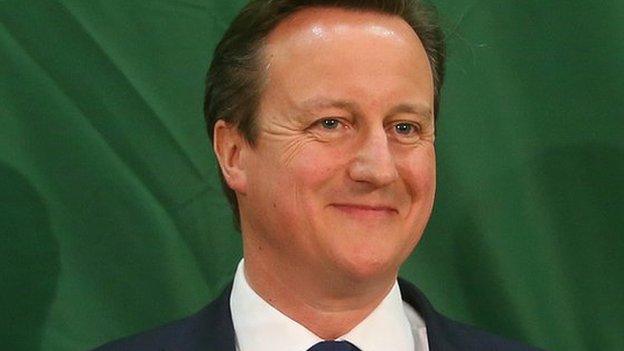
- Published8 May 2015
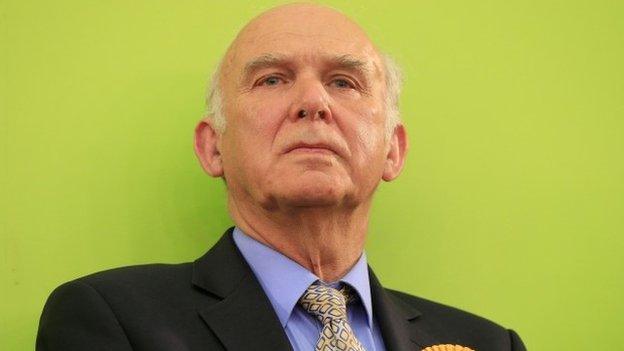
- Published8 May 2015

- Published8 May 2015
